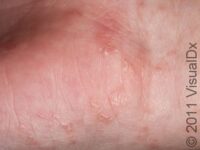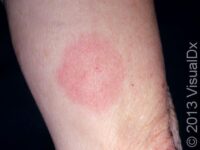
Insect-Borne Diseases
Insect-borne diseases are illnesses transmitted to humans by insects. Some of these illnesses are rare and deadly, such as bubonic plague, and some are common and more of a nuisance, such as lice (pediculosis).
Most insect bites cause illnesses in which the symptoms are limited to the skin. Examples include scabies, head lice (pediculosis capitis), and public lice (pediculosis pubis). In these cases, the insects are not infected with any bacteria or virus, but the bite of the insect itself causes an itchy rash on the affected area. For example, in the case of head lice, the affected person experiences an itchy scalp. These are contagious from person to person and can be avoided, but the illness is rarely more serious than the symptom of itch. A doctor can distinguish among these diseases and can prescribe advice and treatment.
More rarely, insect bites cause serious disease. These serious insect-borne diseases occur when the insect is infected with a bacteria or virus and transmits that to a human via a bite. The insect can be a mosquito, as in yellow fever or dengue fever; a flea, as in bubonic plague; a tick, as in Lyme disease; or a louse, as in trench fever. These illnesses tend to occur in specific geographic areas or under specific circumstances. For example, mosquito-borne illnesses tend to occur in tropical regions. Trench fever occurs among people who live in close quarters and who have poor hygiene. Lyme disease is transmitted by ticks in temperate, wooded regions, such as the northeastern United States. Bubonic plague is found worldwide in areas infested with rats, as the particular flea that transmits the plague is a rat flea.
The best way to avoid contracting an insect-borne disease is to be aware of travel recommendations if traveling and to discuss your concerns with your doctor.


